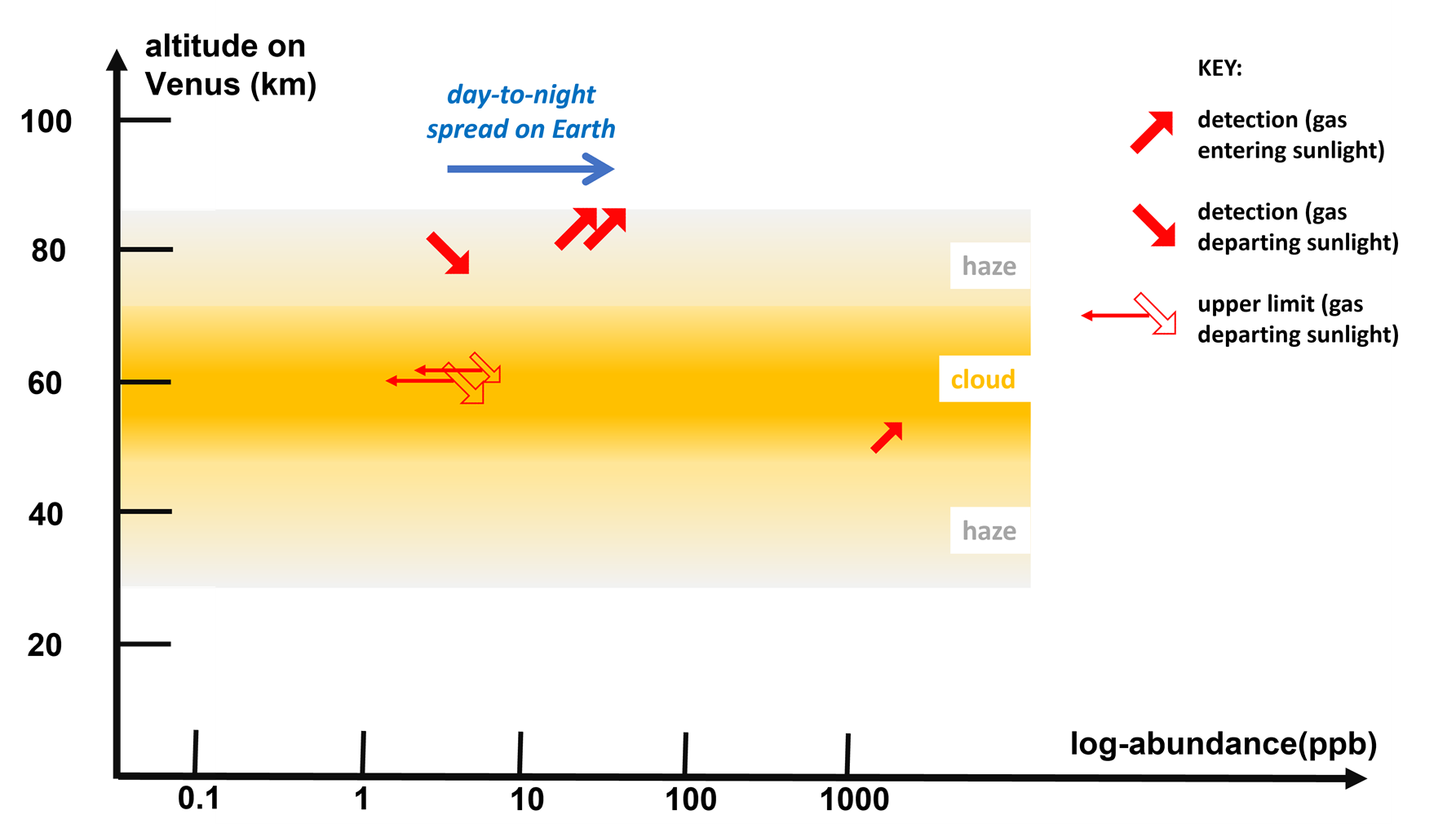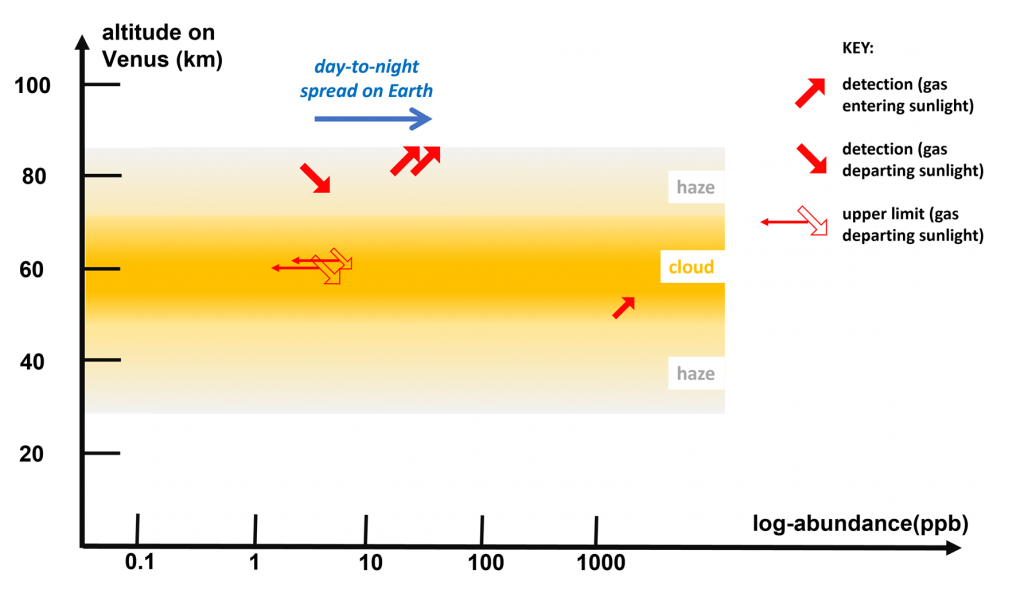The Venusian atmospheric phosphine debate continues in 2023. Recently Cordiner et al. (2022) find no phosphine in Venus’ atmosphere, using the airborne SOFIA observatory (1). Professor Jane Greaves and the phosphine team, however, have reanalyzed the SOFIA data and recovered a 5.7 σ candidate detection, at ~3 ppb of PH3 above the clouds of Venus (2). Moreover, we hypothesize that the detections (3, 4) and upper limit observations (i.e. the non-detections) (5, 6) can be reconciled if the former are from ‘mornings’ in Venus’ atmosphere and the latter from ‘evenings’. Sunlight reduces the amount of phosphine in Earth’s atmosphere by more than ten times during the day as compared to the night (7), so similarly on Venus, we might expect lower abundances of PH3 when the part of the atmosphere observed has passed through sunlight (see Figure below; adapted from (2)). If the available observations of Venus can be reconciled in this way, further modelling of possible sources of PH3 (e.g. through photochemical processes, disequilibrium chemistry, or extant life) seems worthwhile. Modeling work and experiments aimed at finding novel, previously unknown, chemical routes of phosphine formation in the Venusian atmosphere have recently been proposed (8) and if completed should contribute valuable data to the debate on the source of PH3.
The debate regarding phosphine in Venus’ atmosphere is likely to continue for some time. Attempts to reconcile conflicting observations are ongoing. A new JCMT survey led by Dr. David Clements and Prof. Jane Greaves is currently underway. Ultimately the Venusian phosphine debate can likely only be resolved by new direct sampling of Venus atmosphere, potentially with the powerful Venus Tunable Laser Spectrometer (VTLS) instrument on board the DAVINCI descent probe (9).

The sketch of the trend of phosphine abundances by altitude. Symbols indicate candidate detections plus best upper limits for phosphine abundances. Rising arrows indicate observations made where the super-rotating atmosphere was rising into sunlight and falling arrows indicate observations made where the atmosphere was descending towards the nightside (see key). Large and small symbols indicate that a large fraction of the planet area was observed, or that a small region was sampled, respectively. For comparison, the blue arrow indicates the ten-fold increase of terrestrial phosphine from day to night – note the arrow’s plotted position is arbitrary; Earth hosts much lower PH3 abundance than Venus.
- M. A. Cordiner, et al., Phosphine in the Venusian Atmosphere: A Strict Upper Limit from SOFIA GREAT Observations. Geophys. Res. Lett., e2022GL101055 (2022).
- J. S. Greaves, et al., Recovery of Phosphine in Venus’ Atmosphere from SOFIA Observations. arXiv Prepr. arXiv2211.09852 (2022).
- J. S. Greaves, et al., Phosphine gas in the cloud decks of Venus. Nat. Astron. 5, 655–664 (2021).
- R. Mogul, S. S. Limaye, M. J. Way, J. A. Cordova, Venus’ Mass Spectra Show Signs of Disequilibria in the Middle Clouds. Geophys. Res. Lett., e2020GL091327 (2021).
- T. Encrenaz, et al., A stringent upper limit of the PH3 abundance at the cloud top of Venus. Astron. Astrophys. 643, L5 (2020).
- L. Trompet, et al., Phosphine in Venus’ atmosphere: Detection attempts and upper limits above the cloud top assessed from the SOIR/VEx spectra. Astron. Astrophys. 645, L4 (2020).
- D. Glindemann, A. Bergmann, U. Stottmeister, G. Gassmann, Phosphine in the lower terrestrial troposphere. Naturwissenschaften 83, 131–133 (1996).
- M. Ferus, et al., Abiotic chemical routes towards the phosphine synthesis in the atmosphere of Venus in European Planetary Science Congress, (2022), pp. EPSC2022-198.
- J. B. Garvin, et al., Revealing the Mysteries of Venus: The DAVINCI Mission. Planet. Sci. J. 3, 117 (2022).

